Related Topics
Sporting Philadelphia
A few reflections about sports in and around Philadelphia.
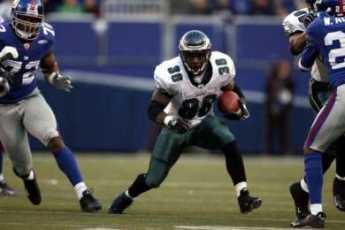
Franklin Inn Club
Hidden in a back alley near the theaters, this little club is the center of the City's literary circle. It enjoys outstanding food in surroundings which suggest Samuel Johnson's club in London.
Philadelphia Medicine
The first hospital, the first medical school, the first medical society, and abundant Civil War casualties, all combined to establish the most important medical center in the country. It's still the second largest industry in the city.
Yet Another Toast to Dr. J. William White
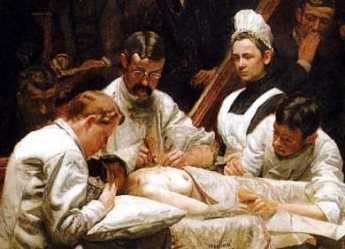
|
| Dr. J. William White |
Who was Dr. J. William White, and why do we drink a toast to him every year at our Annual Meeting?
I will answer my second question first: Dr. J. William White died on April 24, 1916, leaving a Will that he finally signed only on March 24 of that year. The Will, drafted by John G. Johnson, the most famous Philadelphia lawyer of that time, runs to 26 pages and disposes of an estate of $868,176.05,--which was real money in 1916.
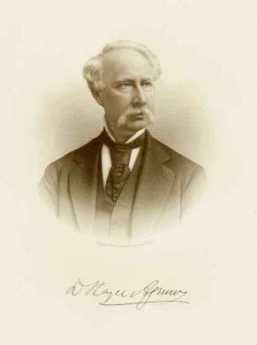
|
| Dr. David Hayes Agnew |
Item 17 of that Will reads as follows: "I give to the Franklin Inn Club of Philadelphia five of its bonds of $100 each to me belonging.
IN ADDITION TO THIS, I give to said Club the sum of $5,000 to be invested by the Directors of the Club, with the approval of the majority of the membership, and the income to be expensed in such way as will best subserve the interests of the Club and conduce to its perpetuation.
I will be glad if, in doing this, they can assure the occasional remembrance of my name. The Club has been of me the source of so much pleasure and happiness that I feel that I owe it something in return."
Well, I have not examined the minutes of our Board to see if it really was discussed and voted upon by a majority of the members, but when I joined in 1968, I was told that Dr. White's bequest had been used for this annual dinner in his memory as long as there was money to pay for it, then only to buy the champagne for the toast to his memory, and then in my time even the champagne money was drunk up.
We still talk about him. He was in every sense a "character", a special Philadelphia character. A lot of this information comes from a biography his friend Agnes Repplier published in 1991. J. William White's father James William White Senior was a doctor, the founder of Womens' Maternity Hospital, and President of the S.S. White Dental Supply Company, an extremely successful business which operated until recently from a big building just down there on 12th Street. The Money that flowed from this business enabled our Dr. J. William White to do pretty much what he wanted all of his life.
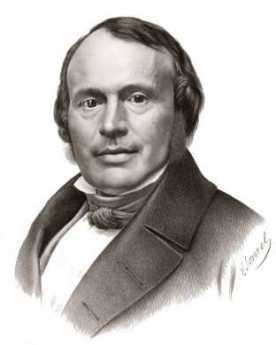
|
| Professor Louis Agassiz |
He was a very smart boy, strong, and with a bad temper. He got into fights at school, but he also managed to earn both an MD and Ph.D. from the University of Pennsylvania in 1871, at the age of 21. He maintained a passionate loyalty to Penn all of his life. Directly after graduation, he obtained a job on a U.S. Coastal Survey ship, theHassler on a survey of marine life and ocean bottoms conducted by Professor Louis Aggassiz of Harvard. He was hired as a "Hydrographic Draughtsman" but it turned out he was to be the expedition photographer and film developer because nobody else knew how to do that. Before they sailed, he also wangled a job as correspondent for The New York Herald. They sailed from Boston in December 1871, explored their way around South America and arrived in San Francisco in August of 1872. On his way home by train, young Dr. White stopped in Salt Lake City to hear Bringham Young preach. Bringham Young preached against doctors and lawyers, and told the women in his audience that they should not employ obstetricians, that they and their babies would be better off without them.
When Dr. White returned to Philadelphia, he went to work, first as a resident at
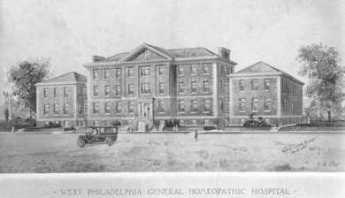
|
| PGH |
Philadelphia General Hospital, then a doctor for Eastern State Penitentiary, where he apparently lived for a while, where he took boxing lessons from a giant prisoner. By 1876 he was an Assistant Demonstrator of Practical Surgery at Penn, and a couple of years later he was working under the most prominent Philadelphia surgeon Dr. D. Hayes Agnew. In Thomas Eakins' famous painting "Dr. Agnew in his Clinic" we can see Dr. White doing the actual cutting, while Dr. Agnew is giving the lecture.
This picture is also interesting because
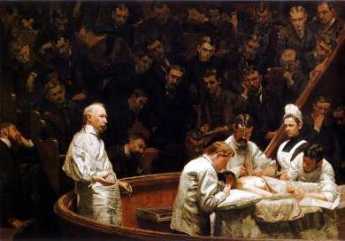
|
| Agnew Clinic |
right there in the middle of the action is a stalwart female, the surgical nurse. By the time of this picture, both Drs White and Agnew were having trouble with the Board of Governors: female students were complaining that they were not allowed into these clinics.
Drs Agnew and White replied that "the nature of the diseases and the conditions of the patients made the presence of females undesirable."
The doctors offered to quit and the Governors apparently backed down. But what about that nurse?
Another famous story: In 1877 Dr. White was elected to the First City Troop
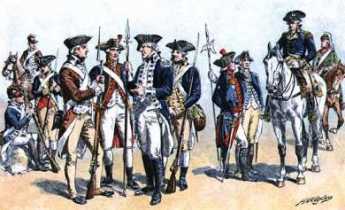
|
| First City Troops |
. For some reason, this didn't look right for a young doctor, because in these long years between wars, the Troop was known more for parties, banquets, and balls than for national defense. However, he joined, enjoyed the parties and the riding. Previous Troop surgeons had worn regular street clothes; Dr. White put on the fancy Troop uniform. Probably at a party, a Trooper named Adams objected, became loud. Dr. White floored him. Mr. Adams sent a formal challenge to a duel.
Sensation! Nobody could remember a duel in Philadelphia, where it was against the law. The newspapers were in an uproar, the New York Herald,
for which Dr. White once wrote letters from his voyage around South America, invented a story about a lady who was supposed to be the real cause of the fight. Mr. Adams and Dr. White, accompanied by seconds and a surgeon, crossed the Mason-Dixon Line, took single shots at each, shook hands and went home. Dr. White shot into the air. Years later, Adams confessed that he had aimed at Dr. White, but missed. Eventually, the storm blew over, but it is remembered as the last duel around here -- as far as I Know.
As to the City Troop, Dr. White's Will left $5,000 in Trust for a "J. William White Fund, the income to keep remembrance of the facts that I served as Surgeon and was the first incumbent of that position to be directed by the Troop to wear the time-honored full dress uniform."
I don't know if the Troop bought champagne to keep remembrance.
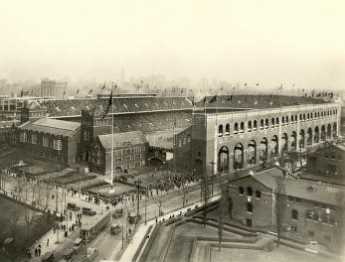
|
| Franklin Field |
Although Dr. White became one of the best surgeons here, and wrote several successful textbooks, he is mainly remembered for his passion for athletics. He was made the first Director of Athletics at Penn.

|
| Army-Navy Games |
He built the first Gymnasium, he built Franklin Field, he arranged for Army-Navy Games to be played here, he got his friend Theodore Roosevelt to attend, he spent every summer either climbing the Rockies or climbing the Alps together with his very sporting and strong wife, Letitia.
Letitia was also a better shot than her husband.
Perhaps Dr. White's most famous sport was called "Angling for Men". He learned this sport on vacation in
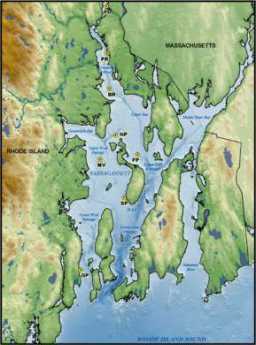
|
| Narragansett Bay |
Narragansett Bay. The players are in a rowboat, and the contestant jumps into the water, with a strong rope tied around his waist. The Men in the boat try to haul the Swimmer back into the boat, while he resists. When Dr. White was 46 years old it took three of his friends 38 minutes to get him back within 100 feet of the boat, but they never got him in!
Dr. White moved in very exalted circles. Among his close friends were Henry James,
whom he visited in Rye and who lived with the White's on his visits to Philadelphia: John Singer Sargent, whom Dr. White persuaded to paint his portrait although Sargent had given up portraits; and the famous English doctors Sir Frederick Treves and Sir Joseph Lister, and as I said, President Theodore Roosevelt.
In later years, after retiring from regular surgery, Dr. and Mrs. White traveled all over the world, although some patients including John G. Johnson insisted that only Dr, White could do any procedures upon their own bodies!
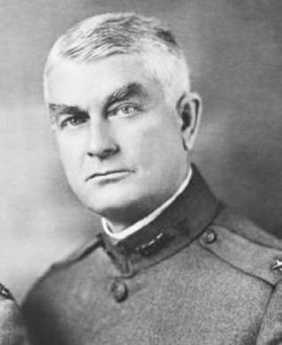
|
| William Mayo |
Well, of course, Dr. White had his own problems, and like all men, became a patient himself. In 1906, he developed a hard nodular mass in his left iliac fossa which, I gather, is not good. Probably cancer. He knew what to do. He took a train Rochester, Minn. To his friends the Mayo Brothers. When they decided to operate, three top surgeons from Penn went out to watch. Dr. William J. Mayo operated and successfully removed congenital diverticulitis which had caused a perforation of the bowel.
Later: Dr. Mayo: "Well, you're all right."
Dr. White "Well, you're a good liar. I've been there myself, and I know."
Dr. Mayo: You don't know everything. It's like a bag full of black beans, and one white bean. You pull out the white one. Now get well!"
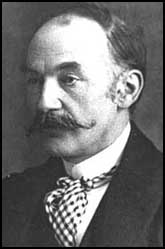
|
| Thomas Hardy |
By next summer he was well and traveling again. He received a degree from University of Aberdeen, he met Thomas Hardy, he went to Egypt, next year to China, when the First World War began he was passionately pro-Allies, visited friends in London, visited wounded soldiers at the American Ambulance Hospital in Paris, spent much time there but did not operate, flew over the battlefields in a French military plane, and visited Reims during a German bombardment. He visited the British front, returned to London, involved himself in the issue of Henry James becoming a British citizen because of America's Neutrality, then sailed home across an ocean full of U-Boats.
Back in Philadelphia - actually on his estate in Delaware County he raised money for the American Hospital in Paris, and again involved himself in several disputes, about the War, about a Penn faculty member...but now he was dying, we're not clear from what, but it sounds like cancer, after all. He was in great pain and had to be hospitalized. He died in his beloved University Hospital, surrounded by colleagues and friends, on April 24, 1916.
I close with a few more words about his Will. As I said, it is 26 legal-size pages, really the story of a life, packed with bequests to every person who was close to him, every organization he belonged to-- and most of them, like the one to us here at the Inn, ask that something be done to remember J. William White, which seems --to me -- little sad. Why were this popular, successful men so afraid of being forgotten? Was it because he and his wife had no children?
I don't know, but here, tonight, we remember: I raise my glass-- champagne or not--to the memory of Dr. J. William White, a character if there ever was one!
------given at the Franklin Inn Club on January 14, 2005, by Arthur R. G. Solmssen
Originally published: Tuesday, February 13, 2007; most-recently modified: Friday, May 03, 2019
| Posted by: how to get youtube views free | Feb 13, 2012 9:58 AM |
| Posted by: cheapostay promo code | Feb 13, 2012 9:36 AM |
| Posted by: esalerugs coupons | Feb 13, 2012 9:14 AM |